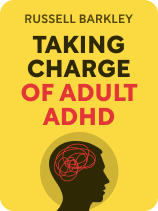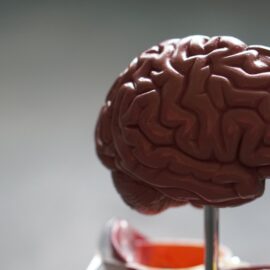

This article is an excerpt from the Shortform book guide to "Taking Charge of Adult ADHD" by Russell Barkley. Shortform has the world's best summaries and analyses of books you should be reading.
Like this article? Sign up for a free trial here.
Did you know children aren’t the only ones who can get an ADHD diagnosis? How do adults get diagnosed with ADHD?
In the overwhelming majority of cases, ADHD symptoms begin during people’s formative years. However, while some are diagnosed early, others don’t learn that they have ADHD until well into adulthood.
Here’s how doctors determine if an adult has ADHD.
Diagnosing ADHD
ADHD disrupts your ability to function in numerous ways, but the world of an adult is starkly different than the world of a child—as such, Russell A. Barkley says that ADHD presents itself differently in adults than in children. So, how do adults get diagnosed with ADHD? To diagnose adult ADHD, doctors assess the following range of factors:
- You’re easily distracted and find it challenging to focus on tasks or activities. For example, during meetings at work or social gatherings, you constantly check your phone, go off on conversational tangents, or get lost in your thoughts.
- You make impulsive decisions and find it difficult to stop unproductive behaviors. For instance, you might frequently buy things you don’t need without considering your budget, or you might spend every morning scrolling through social media instead of starting your work.
- You have a hard time following lists of instructions or doing the steps in the right order. For example, you assemble furniture without reading the instructions first, or you might mix up the sequence of steps in preparing a recipe.
- You struggle to honor commitments. You forget about plans you’ve made with friends, fail to complete tasks you’ve promised to do, and frequently show up late to appointments.
- You have trouble engaging in leisure activities. You prefer high-intensity activities that involve constant movement because you’re too restless to participate in relaxing pastimes.
- You drive too fast. You have a hard time following the rules of the road, are frequently pulled over and ticketed, and may have a history of automobile accidents.
| The Neuroscience Behind ADHD’s Symptoms In ADHD 2.0, Edward Hallowell and John Ratey explain that many of the symptoms Barkley mentions come from an inability to shift between two types of brain activity—the task-positive network (TPN) and the default-mode network (DMN). The TPN engages when you’re absorbed in a task and need to concentrate. In contrast, when the DMN is active, you’re in a more thoughtful, imaginative state. In neurotypical people (those whose brains function in a way that’s similar to most of their peers), these two types of brain activity switch as needed. But in people with ADHD—considered neurodivergent because their brains process information in an atypical way—both systems are often active at the same time, so that even when you’re trying to focus on a task, your imagination is still running wild. Hallowell and Ratey’s interpretation explains many of Barkley’s criteria listed above. If the brain’s default-mode network is stuck “on,” then constant distractibility is a given. Impulse control, honoring commitments, and following instructions will also likewise suffer if your brain’s task-positive network, which would keep you on point, is being overridden. But what about Barkley’s last two examples—driving too fast and craving high-intensity activities? In Thriving With Adult ADHD, Phil Boissiere points to the brain’s prefrontal cortex, which plays a strong role in emotional regulation. People with ADHD struggle because their prefrontal cortexes developed differently than those of the average, neurotypical adult. Unrestrained emotions can trigger any number of “fight or flight” behaviors such as those Barkley mentions. They may seem like voluntary actions—such as driving your car in a dangerous manner—but they’re all in response to what the brain perceives as an intense flood of emotions. |
To be clear, most people can lay claim to some or all of the above-listed symptoms from time to time, but in ADHD, these symptoms are persistent and severe enough that they derail your ability to lead a normal life. To receive an ADHD diagnosis, you must have experienced symptoms for at least six months, and they had to have begun before the age of 16. Barkley says that if your symptoms started during adulthood, they’re probably due to something other than ADHD.
(Shortform note: Barkley explicitly refutes the myth that “everyone’s a little ADHD,” but he doesn’t go into detail about how that myth is harmful. To begin with, it trivializes the challenges that individuals with ADHD face in their daily lives. It also misrepresents the neurological basis of ADHD, and it undermines the need to get diagnosed by suggesting that ADHD is a universal experience. Myths about ADHD only serve to shame people with the disorder, and they get in the way of helping people get the treatment they need.)
For some people, being diagnosed with ADHD can be freeing—at last they have an explanation for their struggles. The bad news is that ADHD rarely comes alone. Four out of every five people with ADHD have accompanying psychiatric problems, including antisocial behavior, anxiety, depression, and problems with substance abuse. It’s possible that some of these are caused by the stress of living with ADHD, but this is why Barkley says it’s important to be properly diagnosed—it’s only when you understand your challenges in full that you and your doctors will be able to tackle them head-on. We’ll cover treatment options in the second half of this guide, but first, let’s explore what having ADHD as an adult is like.
(Shortform note: One factor that’s come to light in recent years which Barkley doesn’t cover is how ADHD and Autism Spectrum Disorder (ASD) frequently seem to go hand-in-hand. Until 2013, the American Psychiatric Association considered ADHD and ASD to be mutually exclusive diagnoses, but new research has shown that more than half of people on the autism spectrum also fit the diagnosis for ADHD, while a slightly smaller percentage of people diagnosed with ADHD also present with ASD symptoms. The underlying connection between the two is unclear, but research into their shared genetic and neurological roots is ongoing.)

———End of Preview———
Like what you just read? Read the rest of the world's best book summary and analysis of Russell Barkley's "Taking Charge of Adult ADHD" at Shortform.
Here's what you'll find in our full Taking Charge of Adult ADHD summary:
- The various treatment options for ADHD in adults
- How to accept ADHD as a part of your life
- What ADHD can look like in undiagnosed adults






